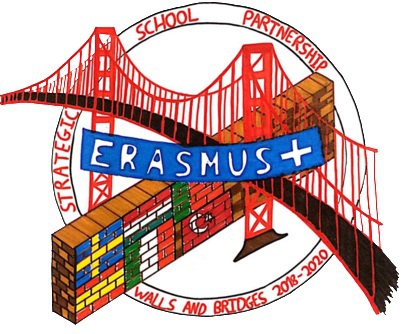Sustainability Report

Gelibolu Visually Impaired Elementary and Secondary School
Home Accomodation During The Mobilities for Sustainability
During the mobilities, the students were accommodated by the families of the host students. They had opportunities to know each other, their cultural differences, living styles, hospitalities and feeling respect indeed. They had a good friendship and are still in touch with each other via social media.
The position of social media in Sustainability
Today social media is not only a tool for communication and entertainment but also a platform where we socialize. More than half of the world now uses social media. During our project we established facebook groups;
https://www.facebook.com/groups/1704629069817181
e twinning portal;
https://live.etwinning.net/projects/project/178753
website;
https://erasmuswallsandbridges.weebly.com/
local press;
http://buyukzafer.com/?p=4012
https://canakkalegundem.net/2018/10/14/geliboludan-dunyaya-aciliyorlar/
Whats app groups.
Activities carried out with students for Sustainabilty
The activities carried out with students to build high quality competences. All types of special needs and fewer opportunities students included in all types of activities. In some activities, they provided as mentors. These are the key role activities fort he future life of the students. Alo it has very important affects on the teachers.
1. Students acquired information about the building techniques and materials and the shapes of the walls and bridges through history; they compared the functions of the different systems
2. We had a research in literature about the metaphors of the wall and the bridge
3. Students acquired cross-curricular competences useful to understand how the different elements of knowledge (from the humanistic, scientific and technological point of view) converge to the work of art.
4. Students worked on researching Cultural Heritage Sites in their own neighbourhood regarding walls and bridges, they visited these places, made promotional leaflets and presented to their partners
5. They had ideas about the different kinds of segregation built by men: the “ghetto”, the “apertheid”
6. Images of bridges, old and new technologies were used to improve the students’ communicativeskills, from a technical and creative point of view,to enrich the students’ technical and scientific skills
7. Art and Craft activities were carried out to produce these above mentioned pictures, tostrengthen the students’ graphic and pictorial skills
8. We did activities to plan a bridge in groups from different primary materials using ICT . ICTwill be a tool as well for gaining new, modern skills in foreign language learning using tablets and online material.
9. We did music and sport activities and dance performances as part of our Cultural Heritage program,
10. We did discussions about some examples of bounds to cross will be done: disabled people and theirachievements, organized meetings with them where students can ask questions and even can try how a disabled person lives using dark rooms.